|
Everything looks the same when flattened under the same PlayStation

We've been providing a great deal of N64 coverage on this site for quite some time now. N64 only that is. We don't mean this on purpose mind you, this IS called Micro-64 after all. But, we have great respect for the N64's competitors, like the PlayStation and - for a couple years at least - the Dreamcast. In this feature, we will be doing an objective comparison between the N64 and the Sega Saturn, that other console that somehow survived in the wake of the Playstation steamroller, even if not for very long. Be it hardware, controllers, games or even first party franchises, this is Micro-64's first side by side comparison feature!
For the sake of simplicity, N64 will go first in each category, ahead of Saturn. The rules of comparison are relatively simple, the winner of each category will be determined objectively, whichever platform has more advantages overall wins.
Hardware 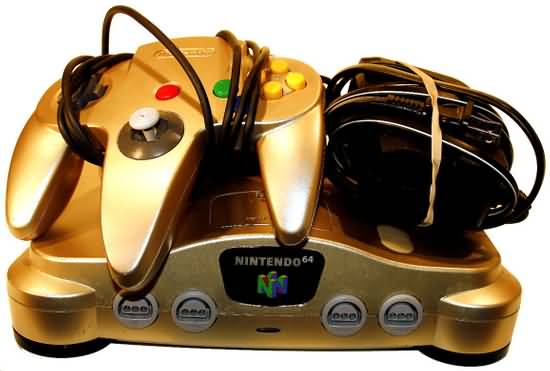
N64
The N64 is somewhat enigmatic when it comes to its hardware. It was released in a time when the Compact Disc was really gaining in popularity and the leading consoles of the period were using it. By 1996, cartridges were old news and felt like last century's tech. Despite the advantages of CD, Nintendo stuck with the cartridge.
While the N64's cartridge-centric design was not for the best in the end, it did have its good qualities. The N64 console is very durable. It has a sturdy plastic case, excessive RF shielding and heat sinks with a million screws and a consolidated, efficient design. In fact, the system's plastic shell is significantly larger than the motherboard it contains. N64 cartridges were capable of on-cart save file storage, much like precursor cart slot systems. This feature is more prominent here though, since the Saturn (and PS1 also) are incapable of on-disc saving, they require memory cards. Perhaps the N64 console's most well known quality is the sheer number of colors and packages released. It launched with charcoal gray and a light gray controller, but then dozens of colors would be made available, like red, blue, yellow, green, smoke gray and even gold. There was also a ridiculous-looking Pokemon edition console with a giant Pikachu-shaped tumor on the right side.
The N64 hardware isn't without its faults. The cartridge format contributed to the N64's meager library and piracy was still prominent regardless of the circumstance. Despite some games having built in save capability, most N64 games did not and resorted to using memory cards which plug into the controller. Perhaps worst of all though, the N64 is incapable of outputting analog RGB, not even PAL units. Although RGB can be restored through modding, the fact it isn't a factory option is a horrible thing. The Saturn on the other hand includes RGB support right out of the box, in every region.
Saturn 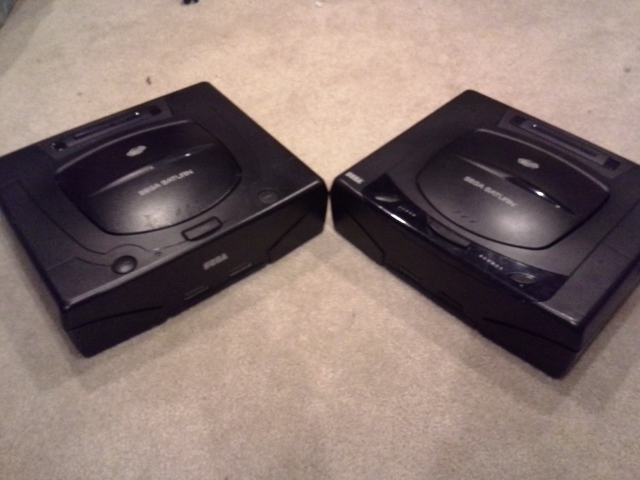
The Saturn's hardware is perhaps the most controversial design of any game console ever made. The Saturn has an interesting pseudo-aleatoricistic quality to it: while it appears to be a bunch of chips (chosen by natural selection) thrown together into a console, it was actually cleverly designed by knucklehead mad scientists at Sega of Japan. The Saturn was quite polarizing to programmers in a love-it or hate-it kind of way: many third party developers complained that the Saturn was poorly designed, annoying, and cumbersome to make software for; others seemed to love the Saturn's versatility and didn't seem to have many problems with it. One example of this is when Treasure stated in an interview that Radiant Silvergun was their only game up to that point where they didn't run into any problems with the hardware during the development process. They also said that it was a fairly rushed release. All of this is puzzling, as Radiant Silvergun is commonly cited as being one of the best-looking and playing titles not only on the Saturn, but in the 32/64 bit generation as a whole. So obviously there were some developers that simply "got" the Saturn, and had little or no difficulty with it. Therefore I have reason to believe that it is likely that Sega used an arcade philosiphy when designing the Saturn: they made hardware that worked for their purposes, with the assumption that it would be used only by them. They were selfish, and didn't take other developers' needs into consideration when designing the Saturn, which—arguably—was an abuse of their power as a major player in the console race. Perhaps why people had issues with software development on the Saturn was simply a matter of pride. If you really want to make games for the Saturn, you must submit to it, play by its rules. You can't "have it your way", this isn't Burger King.
When it comes to aesthetics, the Saturn excels. There are two primary models released, commonly referred to as the Model 1 and the Model 2. The Model 1 Saturn is known for its oval-shaped power and reset buttons, and its drive access light. It features an nice glossy bezel around the buttons, which appears black but is actually dark blue. A lesser known feature is the button behind the battery/MPEG1 door which you can use to clear the internal save memory. The Model 2 Saturn is a bit more modern looking, and is known for its round power and reset buttons, the the Model 2 was designed to decrease manufacturing costs, therefore the glossy bezel and drive access light were eliminated.
The Saturn itself is quite a durable console, much more so than any other CD-based system of its time. Unlike the Playstation, Saturns just don't break down often. You could drop your it off the presidential suite balcony at the Adlon Hotel in Berlin, run over it with a dump truck, spill General Tso's Chicken sauce on it, and then play a few rounds of Virtua Fighter Kids. Simply divine.
Edge: N64
Controllers 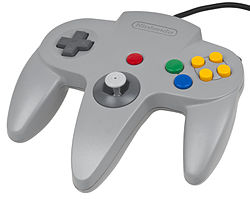
N64
Nintendo's official N64 controller is, to say the least, controversial. Its three handles were alien in nature to many gamers, the analog stick itself was prone to wearing out and the slot in the controller for memory cards felt weird compared to Saturn's built in memory cartridge slot (similar to PlayStation). Other than the analog stick, the official controller is very durable, has quality plastic and all the buttons are responsive. Unlike the Saturn (or PlayStation for that matter), this was the only official controller for N64. The Saturn on the other hand, would see three different controllers made by Sega, in North America at least
The vast majority of N64 games only ever use the control stick, so the left side of the controller with the D-Pad and L button largely goes unused. Although the N64 analog stick wears out, unlike the Saturn 3D Pad's analog stick, the N64's version has a far wider range of motion and smoother sensitivity, which many N64 games were designed for. Not counting third party options, the Saturn's Model 2 and 3D controllers have the higher advantage in usability and quality. In terms of launch controllers, the N64 is much better than Saturn, with the presence of an analog stick being most prominent. Although the 3D Pad was released later than the N64 controller, it is more durable and all the buttons can be reached without moving any hands. Even just in the sense of more options to choose from, Saturn has a definite edge.
The N64 controller is also compatible with certain accessories, like the Controller Pak (memory card), Rumble Pak and Transfer Pak. All of these are covered in more detail in our article Buyer's Guide: Hardware.
Saturn 
Sega released three different official "standard" controllers for the Saturn, commonly referred to as the Model 1, Model 2, and the "3D Pad". Although the US Saturn launched with the ugly Model 1 controller, the Japanese started with the Model 2 version. I will use north american naming conventions for the controllers throughout this article for simplicity's sake.
The popular opinion is that the model 2 controller is the best controller available for the Saturn. Some even go as far as to say that this controller is far superior to any control pad ever made in the history of video games. It is basically identical to the six-button Genesis control pad (not the Majesco one), but with a slightly beefed-up shape and added shoulder buttons. The D-Pad is far better than the large stiff one that you find on the N64, but that isn't really an issue on the N64's part since hardly any games seem to use the D-Pad anyway. The Saturn, however, uses the D-Pad as its primary method of control in the majority of games.
The Model 1 controller is pretty awful. I believe this must have hurt the the US launch as it was the only controller available for some time. It is awkwardly shaped, the buttons have irritating edges on them, the D-Pad is very unnatural feeling, the shoulder buttons feel more like mouse buttons, and not even good mouse buttons. Overall its pretty bad. This is pretty much the game controller equivalent of "A Camel; A horse by committee".
The 3D controller was included with NiGHTS into dreams... and is the basis for what the Dreamcast controller would become. Both the Saturn 3D pad and the Dreamcast controller have a very similar feel, except the analog stick on the 3D pad is more dome-shaped and inset, while the Dreamcast has a more typical analog stick, similar to that of the PlayStation. The Saturn 3D pad has a few advantages over the Nintendo 64 controller: the analog stick itself is very durable, and not at all prone to wearing out; all the buttons are reachable without having to change your hand's position; and it features analog left and right triggers. Even if they're rarely used in actual games, they're an interesting addition that has been copied by nearly every system that has come out since.
All of the Saturn's controllers have great build quality, even the terrible red headed stepchild that is the Model 1 Controller. This is one advantage that the Saturn has over the Nintendo 64, which is infamous for its unreliable controllers.
Edge: Saturn
Other Accessories 
N64
Although this is probably pushing the definition of "accessory", the 64DD is certainly the biggest thing you can plug into your N64. If the Saturn RAM cartridges are accessories, the 64DD can go here as well. The 64DD add-on was meant to greatly extend the capabilities of the N64, but its very late release and severe lack of software left it feeling like a half-hearted, half-baked effort on Nintendo's part. The sheer number of 64DD to N64 cartridge conversions over the years speaks volumes as such. The 64DD is also among the most expensive things N64 accessories you can buy, with $300 USD being a "good deal" on one. It's completely unnecessary to the N64 experience to own one, in fact I would say it detracts from it, if only due to the utter disappointment one gets from buying one and realizing hardly anything was ever released for it. At least the Saturn NetLink still works and it was released in the USA.
The N64 also included a RAM expansion slot, which Nintendo made use of with the Expansion Pak. This accessory was originally intended for use with 64DD, but the constant delays of that add-on made Nintendo decide to release the Expansion Pak early, on its own. As such, it was used to greatly enhance the graphical capabilities of the system, or anything else a developer might use the RAM for. Over 60 games utilized it, a few even required it, far more in comparison than the Saturn and its 1MB and 4MB RAM carts. Not only that, the Expansion Pak was released in the USA, Saturn's RAM carts were not.
While Nintendo only ever made one official controller, there were many 3rd party options available, two of the most popular are the Super Pad / Mako Pad and the Hori Pad Mini 64. Both of these controllers sport a more unified design with only two handles and they include a more durable analog stick. THe Super Pad's analog stick has a similar design to the Nintendo original, but is POT-based instead of sensors like that of a ball mouse. The Hori Mini has more in common with the analog sticks found in the PS1 Dual Shock and Dreamcast controllers. Outside these two controllers, third party offerings drop significantly in quality, most are not that great.
Other, more obscure N64 accessories include a couple arcade sticks, a racing controller (probably the most unique thing available on N64), a racing wheel, the Microphone (most notably used for Hey You Pikachu!), the Bio Sensor used in Tetris 64 (Japan only) and the keyboard and mouse, only really used with the 64DD. Interestingly, there was never a lightgun or any lightgun games released on N64, something the Saturn offered, if not particularly amazingly.
Perhaps the most interesting of the accessories not available for Saturn is the DexDrive, a Memory card adapter for IBM compatible PCs, made by InterAct in 1998. It was somewhat simplistic in its day, but the power it held was immense. Players from around the globe could exchange their save data with ease, or simply download completed saves to unlock everything in the game. The site dedicated to all this activity, dexchange.net, may have been short lived, but the memory of DexDrive lives on. Despite there being a Gameshark for Saturn, another InterAct accessory, there was no DexDrive.
Saturn 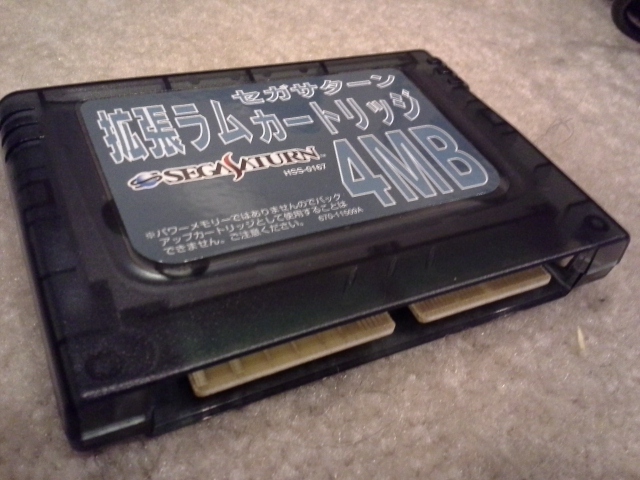
The Saturn, while not being as commercially successful as its peers, was actually more influential than you would think. Besides just being the first to feature analog triggers, the Saturn was the first console to ever have a web browser (called Planet Web) available for it, which used the 28.8kbps NetLink Modem, and was also capable of utilizing a mouse and keyboard. There was also an official IRC chat room, accessible through the Planet Web browser, called #NetLink1 for Saturn users to talk to each other.
The N64 also had a web browser, but it was only for 64DD (Japan only) and the Saturn's browser was available much earlier, in the US on top of that. The Saturn browser also allowed you to use any dial-up ISP you wanted, which means that it is still usable to this day!
Sega gave the Saturn the capability of expanding its RAM capacity via the cartridge slot. There were two RAM carts released: a 1MB cart and a 4MB cart. The 1MB cart was primarily used by SNK, and was the first of the two released. Various games were ported from the Neo*Geo onto the Saturn, most of which support the 1MB cart. Some highlights include Real Bout Fatal Fury Special, Metal Slug, and The King of Fighters '97.
The 4MB cart was primarily used by Capcom, and came out a bit later. Blind Crapcom fanboys that have never played an SNK game love the Saturn's ports of Vampire Savior, Street Fighter Zero 3, and Marvel Super Heroes VS. Street Fighter. The only 3D game to ever use either of the RAM carts was Final Fight Revenge, This game is highly renowned by Capcom fans, and is often regarded as being one of the best games available for the system.
There seems to be a lot of wasted opportunity with the Saturn RAM cart. I find that it was underutilized, especially since it never was released outside of Japan.
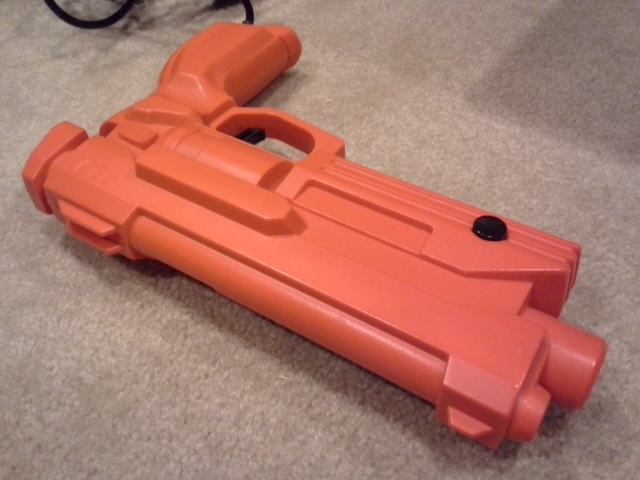
The Saturn also had two ROM carts, one for some forgettable Ultra Man game and another for The King of Fighters '95. These two carts contained actual game data, to reduce loading times. Only King of Fighters '95 made it outside of Japan, but only in PAL territories. RAM and ROM carts could have been used to great benefit on the Saturn, and its a shame that they didn't catch on more than they did. The N64 clearly benefits from RAM expansion more than the Saturn does, looking at actual released games. Its also a shame that Sega didn't experiment with purely ROM cart based games with no loading times whatsoever. It would have been neat to see high-end cart releases, similar to Neo*Geo AES carts, with massive ROM space.
The Saturn also supported a light gun, called the Virtua Gun. Even though it wasn't supported by a huge number of titles, there are a few very good ones available. Most importantly though, the N64 completely lacks a light gun, there is no comparison here at all. The Virtua Gun itself is very accurate and has a good build quality for the most part. However, its main problem is the trigger, which seems a bit shoddy.
Sega, being first an arcade company, of course released a few arcade sticks for the Saturn. The first model arcade stick Sega released is almost universally hated, and was very light weight for an arcade stick, and didn't even feature microswitches in the joystick. The second model, released only in Asian markets, was much more heavy duty and had an actual arcade joystick in it. There was a third model, called the Virtua Stick Pro, that was an absolute monster. It is basically the control panel from a Sega Astro City that has been chopped off of the rest of the cabinet. Good luck importing one from Japan without breaking the bank. The N64 cannot compare, its arcade sticks are terrible by comparison. Not that it matters much, N64 barely has any fighting games.
Edge: Tie
Graphics 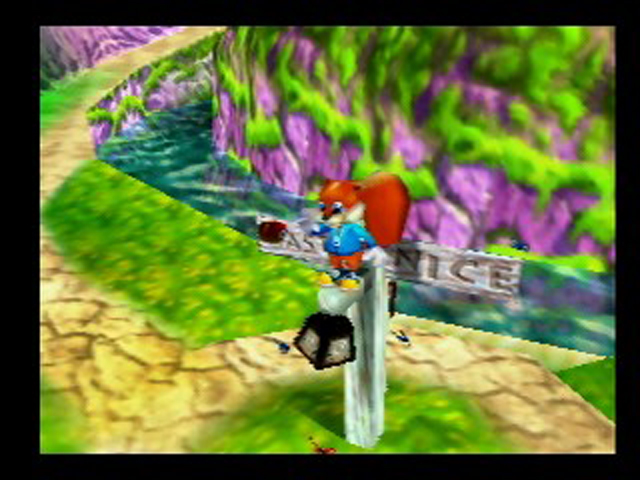
N64
There isn't much contention in this category, the N64 reigns supreme, as far as 3D goes at least. For the time, the N64 featured very high end technology. It was capable of more polygons than either the Saturn or PS1, it had a Z buffer which meant no more distorting geometry like what plagues so many games on its competiting systems and it even includes some fancy anti-aliasing. Nintendo went a bit overboard with the fear of jagged edges though, as the anti-aliasing combined with the common low resolution textures that most N64 games had, produces some very blurry graphics. Despite limitations, many late N64 releases would go on to rival that of early Dreamcast and PS2 releases, the Saturn stayed behind with the PlayStation, seeing a lot of potential lost over the Saturn's terribly convoluted hardware design and non-standard use of quadrilateral polygons. The N64 is also capable of 2D, by manipulating 3D objects into a pretend background and sprite setup of past consoles. The PlayStation most notably also does this for its 2D games. The N64never had many 2D games, but the few that were released look quite good. In theory the N64 should be better at 2D than the Saturn, but Nintendo's restriction of custom "microcode" for the Reality Co-Processor ruined a lot of that potential. In released games, the N64's 2D capabilities are only marginally better than that of the Saturn's, but it's hard to tell amidst the CG rendering and ever so common bilinear filtering. Even if only in quantity, the Saturn excells in 2D.
Saturn 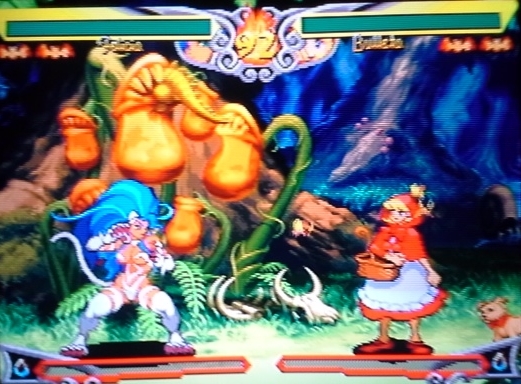
The Saturn's graphics are in some cases universally appealing, and in others a bit of an acquired taste. Though the Saturn and Nintendo 64 (without the Expansion Pak) support similar screen resolutions, the Saturn suffers from a few issues that are not present on the Nintendo 64. For instance, the Saturn generally has a lot of pop-in, which some gamers find to be distracting. The Saturn can display less polygons onscreen than the Nintendo 64 overall, and it lacks the capability of anti-aliasing and trilinear filtering. Some people, however, dislike these graphical effects and argue that this is not necessarily a disadvantage.
Saturn games rarely display very many transparencies beyond transparent background layers. You can usually tell you're playing a Saturn game by the abundance of dithered transparencies all over the place, this gives Saturn games a unique "Saturn-ish" look. While the Saturn does have true hardware transparency features, they were rarely used because they had severe limitations in where and when they could be used, causing things to just look inconsistent. For example, in "NiGHTS into dreams..." some of the sprites are truly transparent, while many other parts of the game are just dithered. In fact, The Saturn's dithering affect was an actual hardware feature that could be applied anywhere, just like true transparencies on the Nintendo 64, Playstation, or any other later console.
Edge: N64
Music and Sound 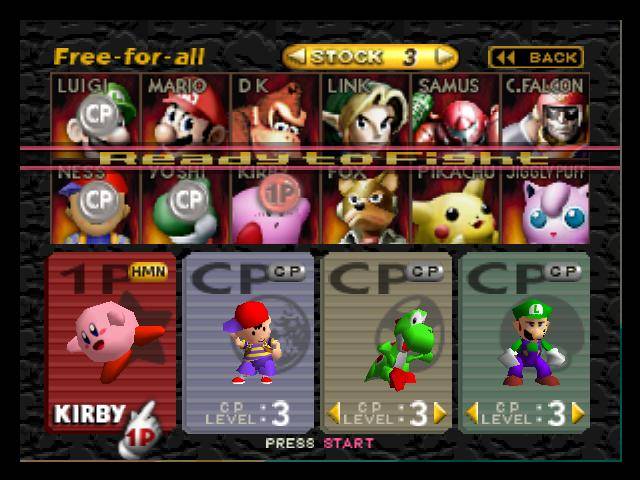
N64
In a reverse situation compared to graphics, the N64's audio hardware is quite lousy compared to the Saturn. Most titles, especially early ones, had to compress audio files to make more efficient use of the small cartridge memory available at the time. Later releases featured more advanced audio compression, including even MP3 in certain titles, none could compete with CDDA. To its credit though, the N64 can sound remarkably good with some games, even despite the technical limitations of the cartridge.
Despite limitations, there are some truly amazing N64 games that make the CD-ROM negligible. Many N64 games feature voice acting, some more than others. The game with the most voice acting is Conker's Bad Fur Day, every bit of text in the game has voice acting for it. This is also a somewhat text heavy platformer, as it includes lots of movie references and cutscenes to drive the story along. In true Nintendo fashion, some N64 games feature very good music composition, like Ocarina of Time, Super Mario 64, Sin & Punishment, Donkey Kong 64 and Mario Kart 64. These games and more all sound quite good, despite being compressed and lacking that pure CDDA sound. An additional innovation not easily possible on CD-ROM is the ability to perfectly transition music, such as seen in Ocarina of Time and Majora's Mask. Here, the music currently playing can be overlapped and replaced by a second track depending on the situation, like if an enemy draws near.
Saturn 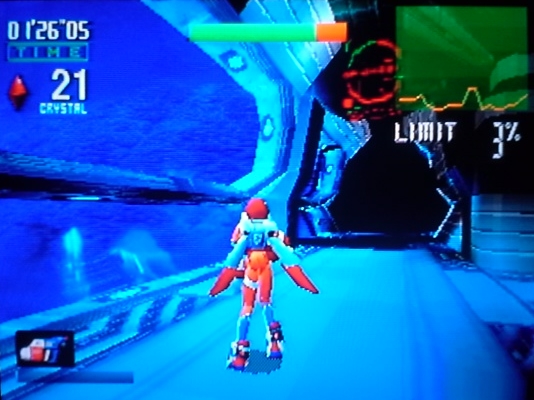
The Saturn has a very powerful sound chip, which is capable of producing high-quality PCM samples and, unlike the Nintendo 64, FM synthesis. Even looking past the obvious advantage of having access to CD-quality music, the Saturn is still at a major advantage compared to the Nintendo 64, as it's sound chip is capable for a more diverse range of sounds, and its CD-based storage allows for much higher-quality PCM samples. So though the Saturn and Nintendo 64 can both produce PCM samples, the Saturn can do it much better. In the early 90's, CD-ROM became accessible enough to include in game console hardware. That was the beginning of the end for systems actually sounding unique and different from each other. For example, you can easily tell music from the Turbografx-16, Genesis, SNES, and Neo*Geo apart from each other just by listening. During the 32/64-bit generation, this is still somewhat the case, but it is quite a bit more difficult to identify a particular system by the it's sound, as both the Playstation and Saturn commonly used standard CD audio for much of their music.
Edge: Saturn
Game Genres 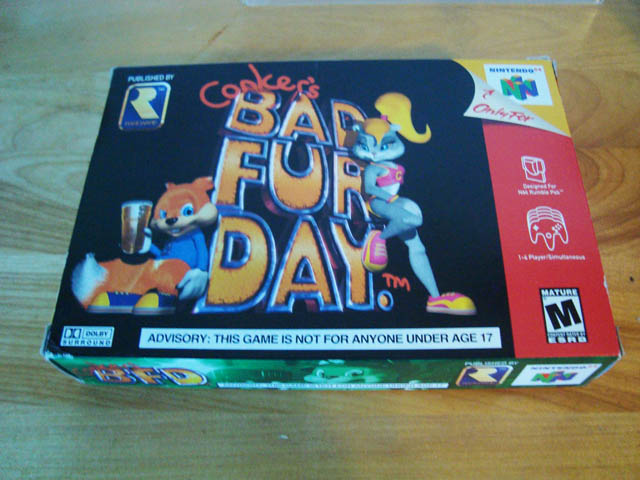
N64
The N64 is a mixed bag in game genres. The cartridge format lead to massive droughts of different genres, most of which were covered in spades on the Saturn. Genres like 2D fighting, RPGs (both Western and Japanese), scrolling shooters, arcade ports in general and numerous niche genres, such as simulators, were nearly completely non-existent on the N64. On the other end of the spectrum, N64 had boatloads of 3D platformers (specifically collectathon games), 3D racing games (both arcade and simulators) and sports games, all of which occupy the vast majority of the N64's overall library. A few RPGs, shooters and arcade ports somehow made it onto N64, but they were rare sights. The Saturn had a similarly small library of games, but had a significantly different disposition of genre quantities. There's hardly any 3D platformers available on Saturn, most notably missing is a real sequel to Sonic the Hedgehog 3. That is completely inexusable. The Saturn benefits from quality arcade racers, but doesn't have as many simulators. As far as USA releases go, Saturn doesn't have very many of its own RPGs as well, only 13 of them, most of which are rare and expensive today. Both N64 and Saturn pale in comparison to the PlayStation's suite of RPGs.
Saturn 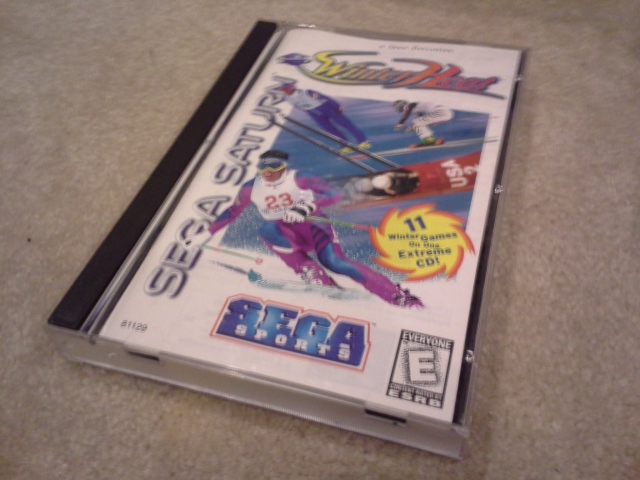
The Saturn's game library, on a world-wide scale, is quite large; there are roughly 1270 software titles released for it. In USA and Canada, there where only around 256 games released, which is close to how many were on the Nintendo 64 in this region. However, even though the Nintendo 64 and Saturn had a similar number of released in the United States, the Nintendo 64 has nowhere near the amount of games released worldwide. For the North American Saturn Library, there are only about 37 software titles that were never released in Japanese or other Asian territories, but were released in the Americas or Europe. Most of them are western-developed sports titles such as Madden or FIFA, though. The Saturn's US library, despite having far less titles available than the Japanese library, and slightly less than the US N64 library, is still very good. Both libraries have about the same amount of genre diversity, but each console has different amounts of certain genres available for them. Both system's US libraries severely are lacking in RPG's, with the Nintendo 64 only five of them, and the Saturn having only thirteen. The Nintendo 64 and Saturn have almost the same amount of Fighting games in the US region, with the Saturn having 29 and the Nintendo 64 having around 20.
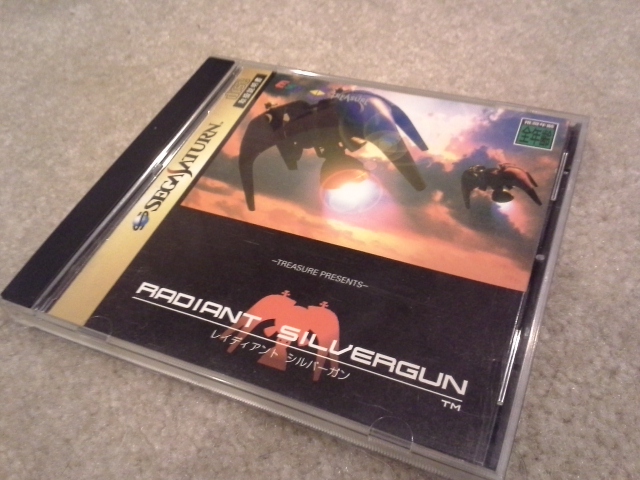
The Japanese library is where the Nintendo 64 pales in comparison to the Saturn. As stated earlier, there are over a thousand games on the Saturn worldwide, and many genres represented on it that are near non-existant on the Nintendo 64. There is an abundance of 2D and 3D shmups, around 75 in total. The saturn is renowned for its shooting game library and many of them are considered the best of their genre, such as Soukyugurentai, Batsugun, Thunder Force V, the ever-popular Panzer Dragoon games, and the earlier-mentioned Radiant Silvergun. The Nintendo 64 on the other hand has only four shmups on it: Bangaioh, Dezaemon 3D, Robotron, and Star Soldier Vanishing Earth; none of which are very highly regarded. The most notable exceptions are Star Fox 64 and Sin & Punishment, which are a little too different to be simply called shmups. Sin & Punishment in particular is a great game, one of the best on N64, but it was left in Japan. It was also made by Treasure, how ironic. When it comes to fighters, the Saturn has you mostly covered, not only in the Japanese library but in the US library as well. There are fewer than 25 fighters on the Nintendo 64 worldwide, and very few of them are highly regarded except for maybe Super Smash Bros. The Saturn on the other hand is home to a plethora of great Fighting games, including Virtua Fighter 2, Marvel Super Heroes vs Street Fighter, Dead or Alive (which is superior to the Playstation version, for the record), Virtual On (the Netlink edition is capable of being played over a phone line), Vampire Savior, the obscure-but-underrated Savaki, and many more. There are about 97 fighting games on the Saturn in total. You'll find an abundance of other arcade-style action and sports games on the Saturn that you just can't get on Nintendo 64, including Die Hard Arcade, NiGHTS into dreams..., Winter Heat, Decathlete, and many others that were only released abroad. Overall, the Saturn has a very good North American library that is about on par with the the Nintendo 64's, but the Saturn's vast import library that the Nintendo 64 severely lacks puts the Saturn over the edge in the games department.
Edge: Tie
Overall
We've put the two contenders through their paces, measured their ups and downs and thrown a few insults at each other. After all this, our conclusion is simple. Both consoles are great, neither is a clear victor overall. They have advantages the other lacks, but neither wins in enough categories to be the only winner here. Based on the findings published in this article, Micro-64 recommends making both the N64 and Saturn permanent additions to your game collection. They actually complement each other reasonably well. The Saturn sorely lacks in 3D, while the N64 in 2D. N64 has numerous platformers and racing games, Saturn has dumpsters full of arcade ports and 2D original titles. Both systems are a winner. The only loser is the gamer who doesn't own both.
Hardware Edge: N64
Controllers Edge: Saturn
Other Accessories Edge: Tie
Graphics Edge: N64
Music and Sound Edge: Saturn
Game Genres Edge: Tie
Overall Edge: Tie
Written By: Aaron Wilcott and Alec Roberts
March 1st 2014
|